
Tasomachi: Behind the Twilight Review
Tasomachi: Behind the Twilight was a puzzling experience for me...and not because of the puzzles.
Let me explain.
Tasomachi: Behind the Twilight is a 3D platformer and the debut title from developer Orbital Express. The story (and I use that word loosely) centers around Yukumo, a girl whose airship breaks down in a mostly abandoned town. The only occupant around, a little cat-person named Kogara, informs her that the only way to fix her airship is to collect “Sources of Earth” and earn the protection of all the towns’ Sacred Tree Sanctuaries.
There is little else to the plot outside of that. For some mysterious reason, the four island towns you play through are covered in a “twilight fog”, which eventually clears as you gain favour with the Sacred Trees and the towns become once-again populated with Nezu, the little cat-like people.
Tasomachi is a game split into two parts: puzzle mechanics and collecting. And as such, I will split this review into two parts: why I started out hating this game, and how it eventually won me over.
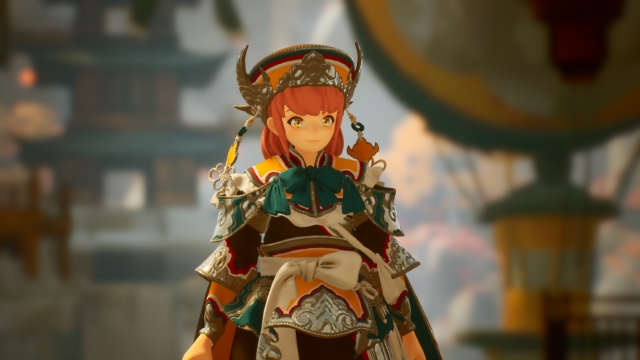
The first half of Tasomachi focuses on gaining the favour of the Sacred Trees. You do this by collecting Sources of Earth — presented as golden lanterns scattered throughout the world — and progressing through a series of puzzle rooms.
This part of the game very much feels like it’s trying to capitalize on the success of Breath of the Wild’s puzzle shrines, yet with considerably less finesse. While there are a few clever puzzles here and there, they begin mind-numbingly simple, and most feel like a matter of trial-and-error rather than being any real challenge.
One recurring thought I had was that Tasomachi would be an excellent game for children, and I would have no problems with it had it been marketed that way. As I played, I did feel a sense of nostalgia set in. It felt reminiscent of the more classic 3D platformers I enjoyed in childhood, such as Spyro the Dragon (sans any trace of action or combat).
Yet as I progressed through the game, Tasomachi quickly fell into a state of monotony. Travelling town to town felt like a rinse-and-repeat cycle each time. The side quests that appear as the Nezu return to the towns are simple and repetitive, but at least add a little more to the gameplay. These quests range from lighting lanterns and pulling weeds, to bullying Nezu by smashing their vases and popping their balloons.
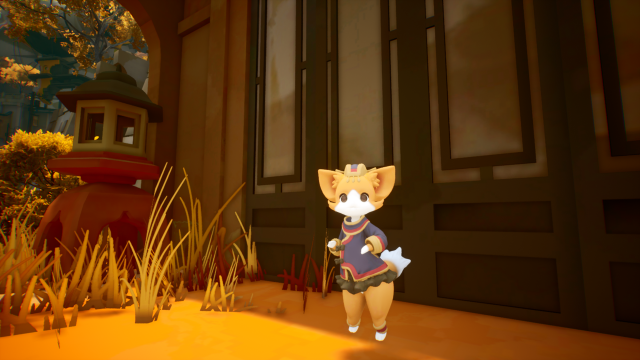
While Tasomachi is extremely cute and pleasant to look at, what bothered me about the visuals is the obvious copy-and-paste used between maps. The most egregious use of this is in the twirling leaves (that almost look more like fluttering butterflies) that dominate a large part of the world. They’re whimsical at first — until you realize that they are everywhere, to the point of losing their charm. Even the Sanctuaries within the same map are exact replicas of each other, aside from having different puzzles.
In that same vein of repetition is the lack of variety in the Nezu and their quests, which are exactly the same between the different towns. Even the Nezu connected to the quest is the exact same, no matter which map you’re in. It’s a lack of basic fine-tuning that feels lazy.
There are many more nitpicks I could point out, from the clunkiness of the menu to the game’s frustrating navigational issues, but suffice it to say that Tasomachi feels like the beta version of a game rather than the finished product.
So how did this game I was actively despising start to win me over? Well, it was when I realized that the problem might be my own mindset.
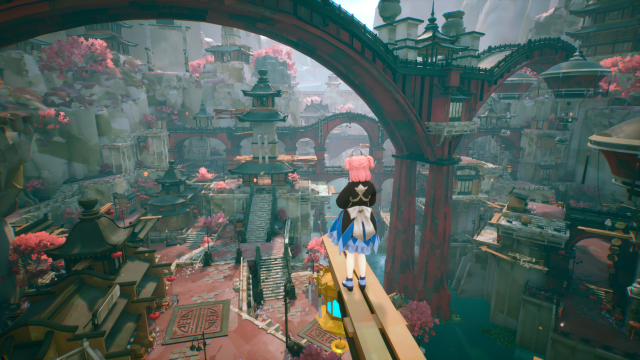
In part, my inability to enjoy the majority of Tasomachi stemmed from a lack of proper expectations going into it. Whether this was due to my own internal expectations or from a failure in the game’s marketing, I’m not entirely sure.
Instead of just sitting back and enjoying it for what it is, I kept hoping for more and being disappointed when it didn’t deliver. The experience felt underwhelming and boring, which I think in a large part is due to how long it takes to get through the puzzle-focussed section.
Once all the sanctuaries are unlocked and completed, the game turns into a pure collect-a-thon as you scour through all the towns with your fully unlocked abilities, gathering enough Sources of Earth to reach the final level.
And this is where Tasomachi finally finds its sweet spot.
Near the end of my playthrough, as I wandered through Gengetsu Lakeside, I was suddenly struck by the beauty of the scene I was in. My avatar, Yukumo, stood on an outlook point at the top of a tower. The lighting in-game had shifted from evening into night and lanterns around the city flickered on, illuminating the island town that was built into cliffs and connected by crisscrossing bridges. It was then that I had a thought: This is a game created as an excuse to showcase a beautiful artistic vision.
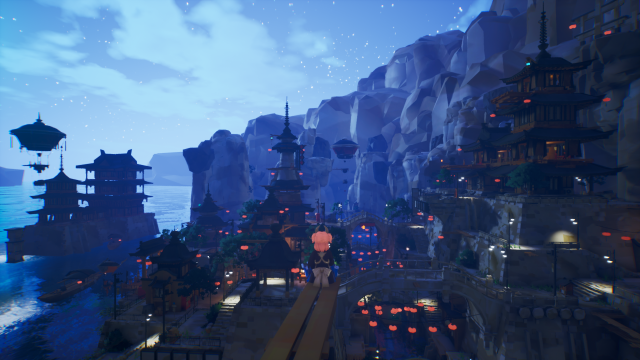
This thought turned out to have merit. As I did a little research, I learned that the developer, Orbital Studios, is actually a single person. As Tasomachi reminds you each time the title screen loads, it is a "game by nocras”. I learned that nocras is a Japanese artist who has worked on several AAA titles (including Breath of the Wild, which lines up with my earlier sense of the game) and is actually the sole developer of Orbital Studios. In a press release, nocras had this to say:
“...I felt a need to express myself and the beauty of the world, which I could only do properly through a videogame of my own. It also feels like the world unfairly abandoned the collect-a-thon platformer, and I want to bring that genre back with beautiful visuals that create the same sense of melancholy and joy that I originally felt in my youth.”
Understanding the motivation behind the game and that it was a labour of love by a solo artist, helped me to forgive its many shortcomings and appreciate it for what it is. Once I put aside my nitpicks and let myself be drawn in by the atmosphere Tasomachi offers, I could see the creativity and beauty behind the world design and in the simplicity of gameplay. I finally fell into the zen-like state that the game strives to provide.
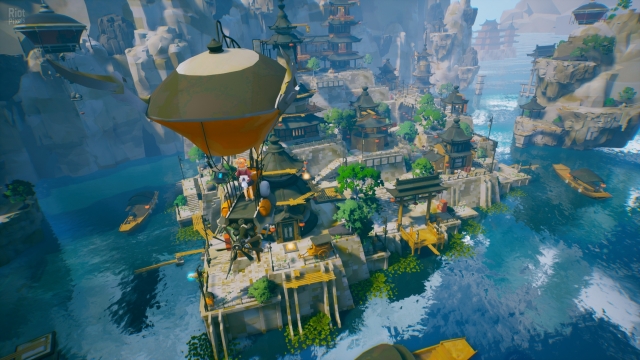
The music (created by Ujico*) is pleasant and enjoyable. Some of the more funky and electronic-sounding tracks feel at odds with the atmosphere of the game, but largely the soundtrack is full of calming and meditative tunes that really play into the mindset you need to enjoy it.
After about five-and-a-half hours of gameplay, as the end title card appeared on the screen, I did feel a sense of emotion I didn’t expect. I only wish that the emotion had felt earned through a deeper connection to the stories and characters, rather than being driven by the beauty of the visuals and soundtrack.
There were no real stakes when it came to Yukumo repairing her ship or the task of clearing the towns of the twilight fog. If the game put a larger emphasis on creating a connection to the characters and expanding on the world’s lore, it may have succeeded at a greater level. I also think it’s a mistake that unlocking the sanctuaries and completing the puzzles dominates the entire first half of the game. I believe that because of this, many players won’t make it far enough through the game to enjoy it where it really shines.
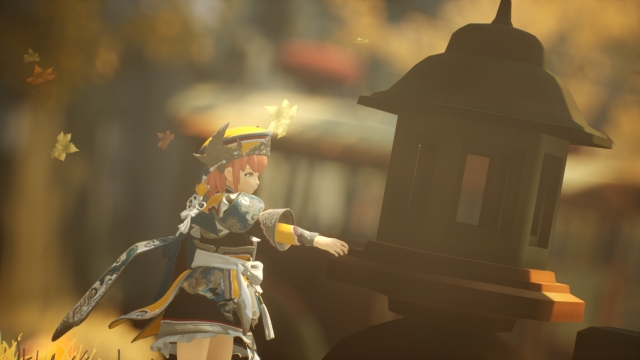
Tasomachi is a game for people who enjoy collection-based gameplay and for completionists who find satisfaction in achievements. Casual gamers who prefer experience over challenge will enjoy the photo mode and the in-game shop with items and outfits to buy. Tasomachi is a mindless romp through a beautiful, fantastical place that is ideal for unwinding and relaxing. It’s not a perfect game...but I don’t think it’s trying to be.
Even after I got everything I needed for this review, I still booted up the game once again to keep playing of my own volition. And I think that says something.
TASOMACHI: Behind the Twilight (Reviewed on Windows)
The game is average, with an even mix of positives and negatives.
Tasomachi: Behind the Twilight is unpolished and suffers from its slow start and lack of story. It’s not a standout game, not even a particularly good one...but there’s something there. It’s an introductory step by a fledgling developer that shows real promise.

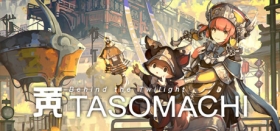






COMMENTS